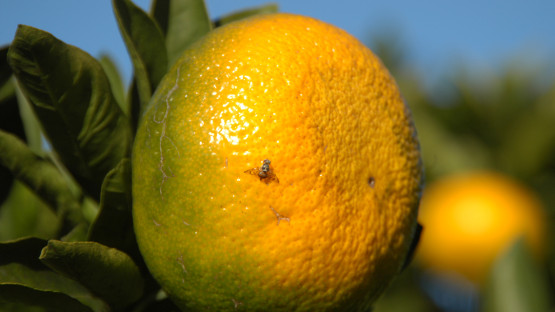The Section assists FAO and IAEA Member States in implementing environmentally-friendly and sustainable methods to control major insect pests of crops and veterinary and human importance. It focuses on an area-wide integrated pest management approach, applying the Sterile Insect Technique where feasible to enhance food security and international trade.
Insect Pest Control Section
The Section’s work ranges from research activities to service delivery, training and knowledge management.
Through its laboratories at Seibersdorf, Austria, it carries out applied research and method development and improvement, helping Member States adapt and integrate the Sterile Insect Technique with other biologically-based methods.
Its research and development work addresses gaps in relation to mass rearing, sterilization, quality control, behaviour, transport and release, microbiology and genetics of major insect pests, such as fruit flies, moths, tsetse flies and mosquitoes. It is complemented by several five-year coordinated research projects, each with the participation of 15-20 researchers from Member States. These projects augment the research at the laboratories, support networking among researchers, and transfer new procedures and methodologies from senior scientists to junior researchers.
The Section also delivers services, supplies biological materials and provides guidance on the development and use of equipment, as well as expert support for coordinated research and field projects. It plays an important role in developing and strengthening technical, managerial and scientific skills required for the effective and efficient application of area-wide integrated pest management programmes. It is also a reference centre for insect strains and mutants.
Supporting an area-wide integrated pest management through knowledge-sharing
A key role of the Section is to disseminate to Member States factual, comprehensive and current information about strategies, techniques, products and processes related to integrated pest management.
To accomplish this, it supports the collection, compilation, analysis, synthesis and dissemination of scientific and technical information; helps set international standards by promoting the development and application of international sanitary and phytosanitary standards under the International Plant Protection Convention and other regional and international standard-setting bodies; provides strategic advice on insect pest control to influential animal health and plant protection organizations, as well as academic, research and teaching institutions; and helps elaborate policies and guidelines for the different components of area-wide integrated pest management programmes.







